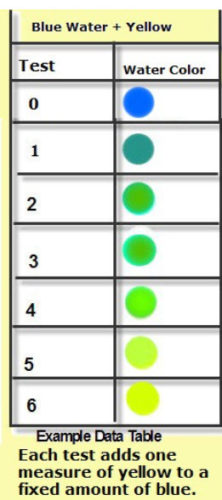A conclusion is a summary of the experiment.
For a cause-effect experiment, the conclusion should state the hypothesis and and tell whether the results of the experiment supported the hypothesis. If the results did not support your hypothesis, say so, and then add information about why this happened.
For Example:
If the cause-effect experiment has the following problem, hypothesis,data, and results, the conclusion might be stated as shown below:
Problem:
How does amount of yellow coloring added to blue water affect the shade of green produced?
Hypothesis:
If the amount of yellow coloring is increased, then the green shade of the water increases.
Data: The chart is an example—-Is it correct?

(Challenge: Perform the experiment and let me know your results.)
Right or wrong, the data chart is used to write the results
Results:
As the amount of yellow is added to the blue water, the color changes to blue-green, which changes to green, and then to a yellow-green.
Conclusion:
My hypothesis for this investigation was, “If the amount of yellow coloring is increased, then the green shade of the water increases.” The results of the experiment did not totally support my hypothesis. The first three measurements of yellow supported my hypothesis that adding yellow to the blue solution would increase the production of a green solution. But, as more yellow was added, the solution’s color became more yellow.
Further Investigations–
Often the results of an experiment will bring up questions that lead to further investigations.
For examples of further investigation ideas for the cause-effect experiment used for this conclusion example, can be found in this book:
